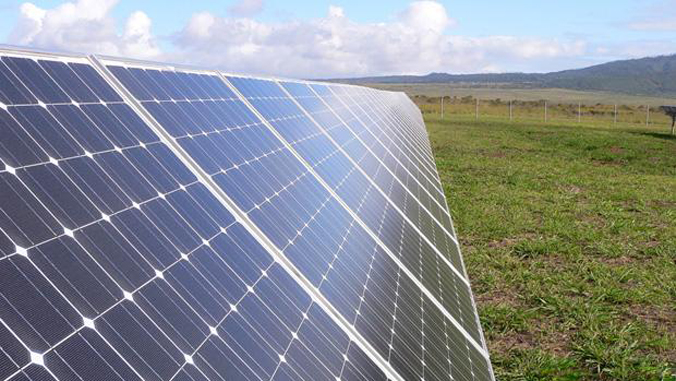
University of Hawaiʻi at Mānoa researchers and a graduate student won the Hawaiian Electric Company (HECO) Innovation Impact Challenge. Information and Computer Sciences (ICS) Assistant Professor Peter Sadowski, ICS graduate student Kyle Hart and Atmospheric Sciences Assistant Professor Giuseppe Torri were awarded a grant to develop short-term forecasts of sunshine that can reach rooftops and solar panels.
The goal of this pilot initiative is to develop innovative products and tools through collaboration between the utility company and the university. During the next three months, the team will develop a forecast tool to predict cloudiness over Hawaiʻi—just 15 to 60 minutes in advance.

“These nowcasts’ could be created by running a weather forecasting model at a very high resolution, but this would end up being too computationally expensive,” said Torri. “For this reason, we decided to use a machine learning approach. In essence, we will train a computer algorithm to ‘learn cloud patterns’ using existing satellite data, and we will use this to predict what clouds are expected to appear in the very short term.”
At any given time of day, the amount of sunlight hitting Earth can be calculated. With that information, and knowing how clouds interact with incoming solar radiation, the team’s predictions allow them and HECO, to determine the amount of sunlight reaching solar panels that generate electricity for homes and businesses across the state.
It is not surprising that clouds are bad news for solar power—low clouds in particular tend to reflect back to space the sunlight that could be used by solar panels to generate electricity. This can significantly reduce the efficiency of the solar panels.
“It is easy to imagine scenarios where sudden changes in cloudiness create equally sudden spikes of electricity demand on the grid,” said Torri. “Our project promises to help HECO manage these spikes by giving them a systematic way to predict them with enough advance that some auxiliary generators may be turned on.”
Read more of the story on SOEST’s website.
—By Marcie Grabowski

